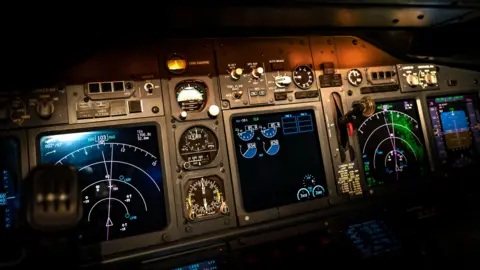The recent Air India disaster, which claimed at least 270 lives, has turned the spotlight on Boeing's 787 Dreamliner, a commercial aircraft lauded for its fuel efficiency and innovation. Until this incident, the 787 had earned a reputation for safety, operating for over 14 years without any major accidents, carrying more than a billion passengers. Currently, there are over 1,100 of these planes in service globally.
The crash of flight 171 just 30 seconds after take-off remains a mystery as investigators recover flight data and work to uncover the reasons behind the tragedy. However, this occurrence has reignited concerns regarding the safety of the 787, especially in light of prior whistleblower testimonies that revealed troubling production standards and quality issues within Boeing.
The Dreamliner, which made its debut in 2009, was designed during a time when airlines needed fuel-efficient options due to rising oil prices. Boeing pivoted from its initial concept of a faster aircraft, the Sonic Cruiser, to create a model capable of long-haul, cost-effective travel. Its innovative design included using composite materials over aluminum, which significantly reduced weight, leading to improved fuel efficiency.
Despite its achievements, the 787 has faced severe challenges. In 2013, it was grounded after incidents involving battery fires. Production continued to be plagued by issues, prompting serious questions about the assembly lines, especially after establishing a new facility in South Carolina to minimize labor union pressures.
Reports from whistleblowers such as John Barnett, a former quality control manager, shed light on grave allegations. He claimed that the urgency to produce aircraft compromised safety, allowing defective parts to be fitted in operational planes. His concerns about manufacturing defects and the use of substandard materials raised alarms about the aircraft’s potential risks, especially for those already in circulation.
The narrative was similar with whistleblowers like Cynthia Kitchens and Sam Salehpour, who also reported practices that jeopardized safety for speed. Salehpour cited shortcuts in assembly processes and described potentially catastrophic models that could affect thousands of aircraft.
Despite these allegations, Boeing maintains that rigorous oversight by the Federal Aviation Administration dismissed claims regarding the structural integrity of the 787. They insist that identified production concerns do not threaten the overall safety of the aircraft.
Industry analysts remain divided on whether past production flaws pose long-term risks. While some assert that the Dreamliner’s stellar safety track record allays concerns, others believe that unresolved production problems could lead to unforeseen dangers.
As the investigation into the Air India crash unfolds, it becomes imperative to determine whether systemic issues within Boeing affected the safety of the 787 and to restore confidence in a model that has long promised reliability and innovation in commercial aviation.
The crash of flight 171 just 30 seconds after take-off remains a mystery as investigators recover flight data and work to uncover the reasons behind the tragedy. However, this occurrence has reignited concerns regarding the safety of the 787, especially in light of prior whistleblower testimonies that revealed troubling production standards and quality issues within Boeing.
The Dreamliner, which made its debut in 2009, was designed during a time when airlines needed fuel-efficient options due to rising oil prices. Boeing pivoted from its initial concept of a faster aircraft, the Sonic Cruiser, to create a model capable of long-haul, cost-effective travel. Its innovative design included using composite materials over aluminum, which significantly reduced weight, leading to improved fuel efficiency.
Despite its achievements, the 787 has faced severe challenges. In 2013, it was grounded after incidents involving battery fires. Production continued to be plagued by issues, prompting serious questions about the assembly lines, especially after establishing a new facility in South Carolina to minimize labor union pressures.
Reports from whistleblowers such as John Barnett, a former quality control manager, shed light on grave allegations. He claimed that the urgency to produce aircraft compromised safety, allowing defective parts to be fitted in operational planes. His concerns about manufacturing defects and the use of substandard materials raised alarms about the aircraft’s potential risks, especially for those already in circulation.
The narrative was similar with whistleblowers like Cynthia Kitchens and Sam Salehpour, who also reported practices that jeopardized safety for speed. Salehpour cited shortcuts in assembly processes and described potentially catastrophic models that could affect thousands of aircraft.
Despite these allegations, Boeing maintains that rigorous oversight by the Federal Aviation Administration dismissed claims regarding the structural integrity of the 787. They insist that identified production concerns do not threaten the overall safety of the aircraft.
Industry analysts remain divided on whether past production flaws pose long-term risks. While some assert that the Dreamliner’s stellar safety track record allays concerns, others believe that unresolved production problems could lead to unforeseen dangers.
As the investigation into the Air India crash unfolds, it becomes imperative to determine whether systemic issues within Boeing affected the safety of the 787 and to restore confidence in a model that has long promised reliability and innovation in commercial aviation.




















